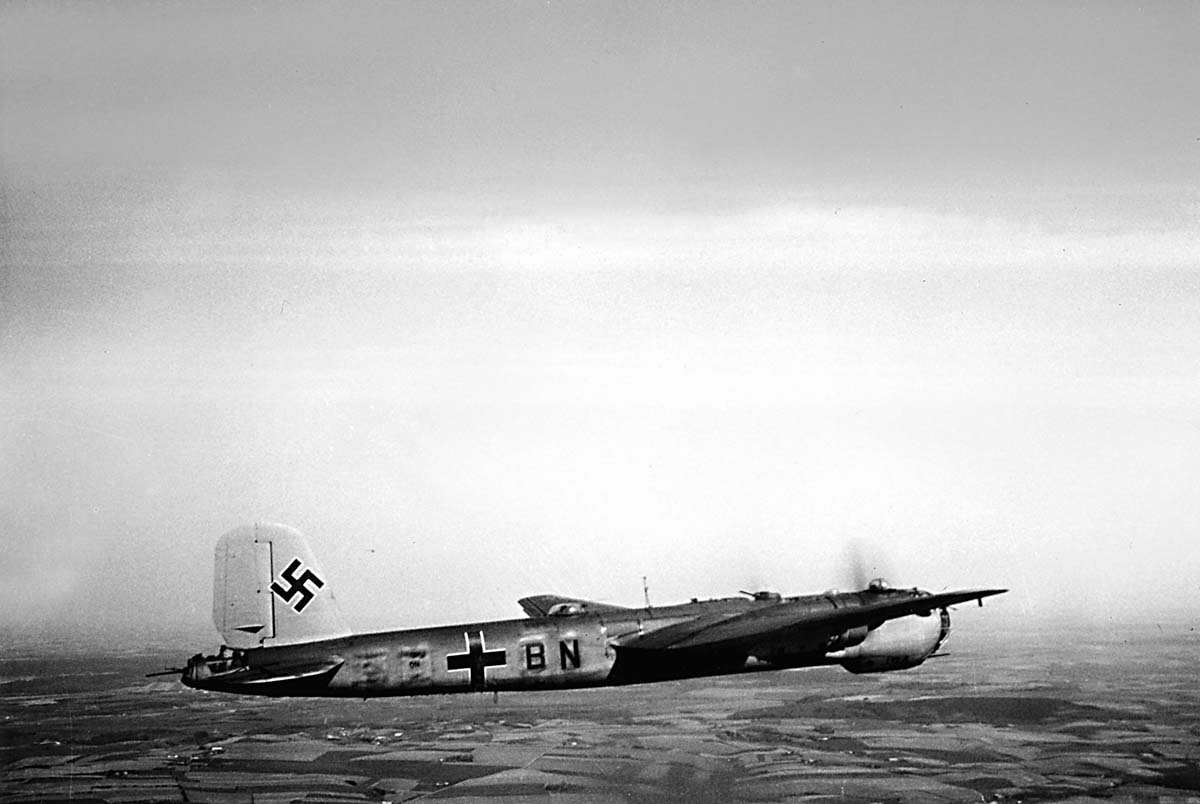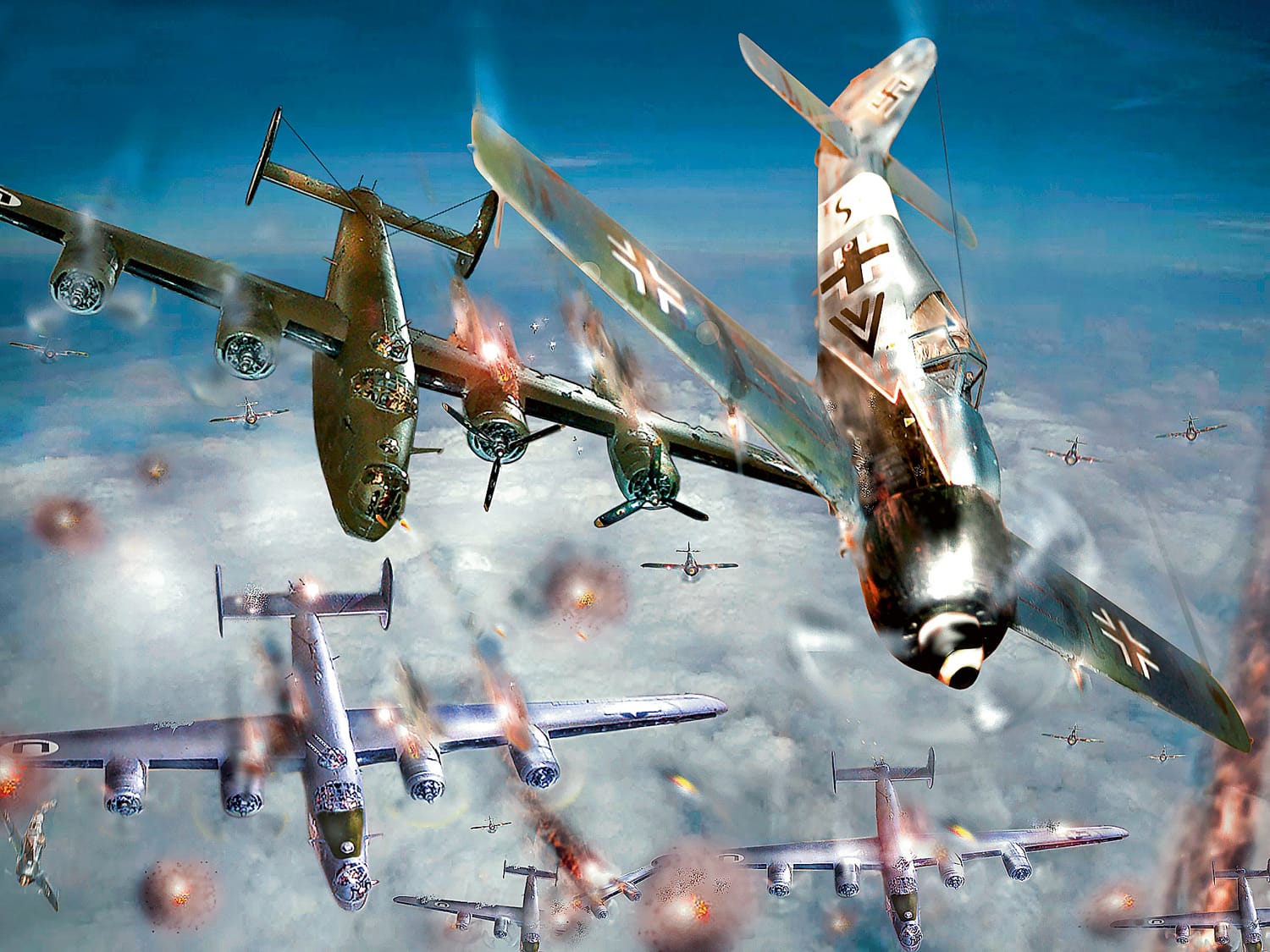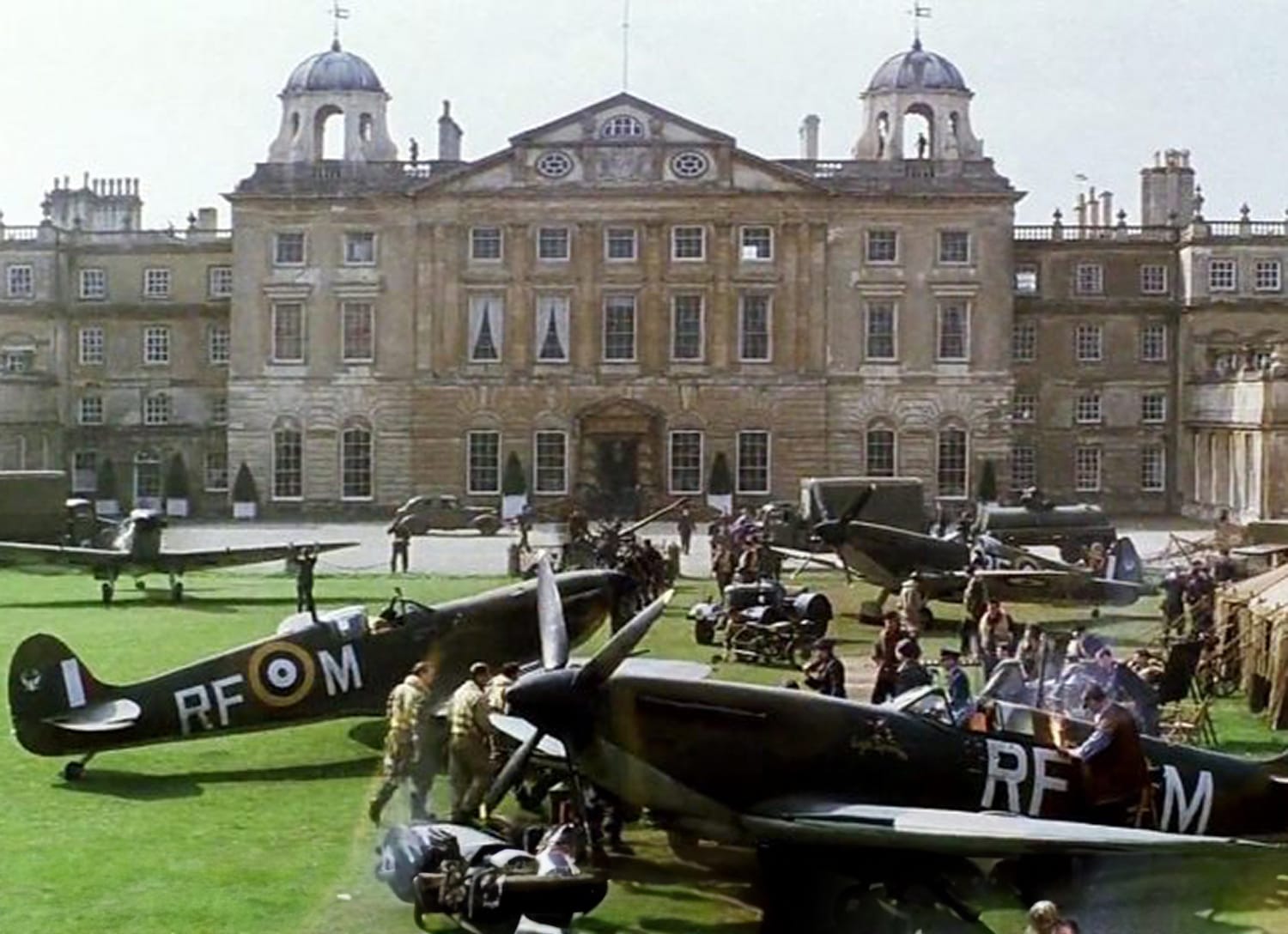Why did the German Luftwaffe have no strategic bomber fleets at its disposal?
Göring’s omission: strategic bombers for the German Reich

When the German Reich began to equip its bomber fleets, his planners in the year 1936 made a persuasive case to Hermann Göring of an urgent requirement for Germany to develop heavy strategic bombers, and demanded they began producing them. Göring, the former flying ace who had risen to the rank of Commander-in-Chief of the Luftwaffe, glibly replied, “the Führer does not ask me how big the bombers are, but how many there are!“
The production of four-engined heavy bombers in Germany therefore foundered on the reluctance of the Commander-in-Chief of the Luftwaffe, the then Generaloberst Hermann Göring, to risk representing the legitimate interests of the Luftwaffe to the Führer. That, however, only tells half of the story. Germany in fact needed to be far more frugal with its raw materials and industrial capability than Britain (which had American support), the USA and also the USSR. Above all, the inter-continental perspective of Great Britain and the USA as island states, therefore, as well as their abundant natural resources, made things so much easier for them to set for themselves different priorities. In the year 1936 who could have imagined the devastating effects this would one day have on Germany’s cities?
When it began to dawn on them they did at long last pave the way for the development of a strategic German bomber. It was to be a fast, four-engined, long-range bomber, capable of carrying a heavy bomb load and able to dive at medium angles, which they later raised to 60°. A jack-of-all-trades, indeed, if ever there was one.
A revolutionary bomber with constructive problems
At the beginning of 1939 the first prototype of the Heinkel He 177 Greif (Griffin) was ready: a truly revolutionary aircraft. To reduce aerodynamic drag and achieve the manoeuvrability for the required diving capability the four engines were housed in two nacelles. Both engines which were coupled thus drove one shared propeller shaft. The four-blade airscrews were correspondingly massive. The visible presence of two propellers therefore actually drove what appeared to be a twin-engined aircraft with the power of a four-engined bomber, but against the reduced drag of only two nacelles. In addition the two propellers rotated in opposite directions, the port twin-engine ran anti-clockwise, and the starboard twin-engine clockwise. That was also an innovative idea.
However, the devil was in the detail and in the unrealistically excessive demands of the Reich Ministry of Aviation. In order to give such a large aircraft a dive-bombing capability (and what would be the point of such an aerobatic manoeuvre with a strategic bomber?) the airframe and the wing roots needed strengthening. That meant an increase in weight which deprived the bomber of its skilfully designed advantage in speed. Apart from that it would not work, because in design terms it was just not possible. To expose a wingspan such as that of the He 177 to real diving and in particular pulling out of the dive, would be tantamount to going into a paratroop mission equipped with an umbrella. Whatever the brilliance of the aircraft designers, there were incontrovertible laws of physics, no matter who was pulling the strings.
In addition, there were basic flaws in the design. Some, it must be said, bordered on the amateurish. The whole cooling system was unreliable and the oil pipes leaked: it was a recipe for trouble.
The inglorious career of the He 177 as the “Luftwaffe lighter“
What followed was the inglorious career of the first pre-production models as the Luftwaffe’s flying “cigarette lighters“. Fire in the engines became such a frequent occurrence that the enemy did not even take the trouble to shoot down the German super bomber. The contra-rotating engines caused uncontrollable sideways swerving on take-off, unless they were perfectly synchronised.
From October 1942 the first improvements were brought to bear with the He 177 A-3 variant. From February 1943 the new Daimler-Benz DB-610 engine was available. This time the technicians finally did their homework, analysed the fires and rectified the shortcomings.
Enthusiasm despite a problematic backstory
The He 177 A-5 now finally delivered what the original design had promised. However, as is so often the case with a bad reputation, the psychological damage, unlike the technology, proved irreparable.
However, the opinion of certain German crew members casts doubt on a judgement based on speed comparison alone, suggesting that the sole German long-range strategic bomber had evidently been unjustly maligned.
“Although the He 177 had a troubled development history and has received a bad press from historians, captured crew members of these particular machines spoke highly of them. High altitude performance was good, with speeds of 600-650 km/h [373-404 mph] ‘easily attained‘; the He 177 A-3 was rated ‘more manoeuvrable than any other GAF [German Air Force, Luftwaffe] bomber‘ ” and:
“Both crews are most enthusiastic about the engines, which appear to function smoothly and efficiently over incredibly long journeys. The disengaging (to save fuel) and re-engaging of the motors now takes place without any risk of fire, a tendency known to have been rife when the motors were first used“.
Why were the German long-range bombers denied a similar success to that achieved by the allied bomber formations? The answer is a simple one and has nothing to do with technology or tactical errors.
- A lack of industrial capacity and natural resources meant that the development of a huge strategic bomber fleet, such as the Americans and British were able to deploy, was never possible.
- Even if a substantially higher number of He 177s had been available earlier, by day the Germans would have been unable to provide them with sufficiently strong fighter protection.
- And in particular: only 400 or so of these bombers had consumed one eighth of the entire monthly production of German aviation fuel in the year 1943. By 1944 the shortage of fuel was reaching crisis point.
Eventually, from the middle of 1944 the majority of the German long-range bombers were forced to remain on the ground: there was simply not enough fuel left to go round. The allied fighter bombers did the rest.
Ebenfalls interessant…

The final kill of the ace of aces, Erich Hartmann, the most successful fighter pilot of all time
Dangerous encounter in the airIn March 1945 a Russian bombing attack on Prague was reported. Hartmann took off with four Me 109s. A Russian formation…
Weiterlesen
Sturmjäger – cuirassiers of the air
Air battle over Germany: the attack on hydrogenation plants and aircraft factoriesIn the early hours of the morning of 7th July 1944 756 B-17 Flying…
Weiterlesen
That’s how historic air battles get botched by Hollywood
Time and again the ignorance and nonchalance with which even highly renowned directors simply ignore historic details is fascinating. They do this in spite of…
Weiterlesen